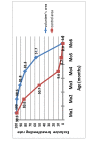Community volunteers can improve breastfeeding among children under six months of age in the Democratic Republic of Congo crisis
- PMID: 22364405
- PMCID: PMC3323360
- DOI: 10.1186/1746-4358-7-2
Community volunteers can improve breastfeeding among children under six months of age in the Democratic Republic of Congo crisis
Abstract
Background: Malnutrition is a major public health problem in developing countries and exclusive breastfeeding is an efficient strategy that can be used to prevent malnutrition and reduce child mortality. The objective of this study is to evaluate the effectiveness of community volunteers in promoting exclusive breastfeeding from birth in an area of endemic malnutrition.
Methods: This evaluation analyzed the impact of the community-based nutrition project in Katana health district of the Democratic Republic of Congo from 2004 to 2006. Each of the villages in this sector had a nutritional village committee made up of five members responsible for continuously working to raise awareness of the importance of exclusive breastfeeding from birth among pregnant women and community leaders in their respective villages. The program worked with community volunteers with a mean age of 37 years, most of whom were married (86%). Eighty percent of the community volunteers had completed secondary school or a higher level of education. Data related to the period of exclusive breastfeeding and to the number of visits made to the health services for 208 children. The data were compared with data from 178 infants collected from another health sector, which had never developed a community-based nutrition program.
Results: The duration of exclusive breastfeeding from birth (median, range) was 6 months (2 to 7) in the intervention area compared with 4 months (1 to 6) in the comparison area (p < 0.001). The proportion of infants receiving exclusive breastfeeding at six months of age was higher in the intervention area than in the comparison area: 57.7% (95% Confidence Interval, CI, 50.9 to 64.5) versus 2.7% (95%CI, 1.1 to 6.6) (p < 0.001). The intervention group had a higher mean weight at 12 months (standard deviation): 8.42 kg (1.41) compared to 7.97 kg (1.02), although this difference was not statistically significant (p = 0.055).
Conclusions: The promotion of breastfeeding by community volunteers in an area of endemic malnutrition in rural Democratic Republic of Congo increased the duration of exclusive breastfeeding from birth.
Figures
References
-
- WHO. The World Health Report 2005. http://www.who.into/whr/2005
-
- Countdown Coverage Writing Group. Bryce J, Daelmans B, Dwivedi A, Fauveau V, Lawn JE, Mason E, Newby H, Shankar A, Starrs A, Wardlaw T. Countdown to 2015 for maternal, newborn, and child survival: the 2008 report on tracking coverage of interventions. Lancet. 2008;371:1247–1258. - PubMed
LinkOut - more resources
Full Text Sources


